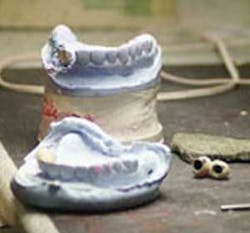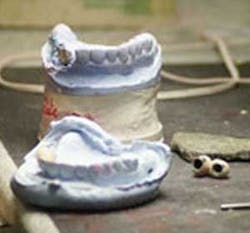Relying on your dental lab for decisions on restorative materials
The past 35 years of my association with dentistry have witnessed a plethora of restorative materials. (For a good laugh, check out YouTube, the movie The Three Amigos, plethora.) I’ve seen from gold to glass-filled composites, non-precious alloy and Captek. From fine and multigrain porcelains to Lithium disilicate, zirconia and hybrid ceramics, there has been a lot of change. In conjunction with these materials came new procedures, new preparation guidelines, and new cementation materials. All of these materials have had a place in restorative dentistry, but not all of them can occupy the same place in restorative dentistry.
Recently the National Association of Dental Laboratories conducted a survey that is referenced in a current Straumann advertisement. It concluded, “Nearly 50% of restorative doctors rely on their laboratory to educate and train them about new restorative materials.” (NADL 2013 Materials and Equipment Survey Report, page 11.)
Misapplication of the “latest” material over time takes its toll on everyone. Better known as “remakes,” the burden of the fabrication cost and doing the prosthesis over again historically falls on the lab. Therefore, the idea that the lab is “just filling the prescription” has ended in the better dental laboratories. They are now taking
a proactive role in understanding a material’s science, application, and processing requirements, and advising dental clients on the use of a specific material for a restoration.
I managed a crown and bridge department in a large midwestern laboratory, where we regularly made Captek substructures for crowns and anterior bridges. The failure rate was 15% until I analyzed the process and found that the dental team was not doing their job correctly. There was an understanding among our dentists that if there was insufficient room for a PFM, they used Captek and the lab “just filled the Rx.” Nothing could have been further from the truth. Captek provides an exceptional restoration when it is used correctly. (My 83-year-old mother has had her Captek restoration for 13 years.) We began educating the dentists on this material and its application, and rejecting cases that did not meet the correct criteria or preparation. Our “remake” or failure rate dropped to under 3%.
This same approach should be applied to all materials, regardless of their popularity. I hear regularly from doctors who want to shorten the crystallization process on lithium disilicate, or stain and glaze procedures for the sake of getting a crown out faster. What a mistake.
Sure, it looks OK now, but what will be the failure rate when the dentist disregards a material process requirement for the sake of a few minutes in the schedule? Will their representative have the answers? Probably not, but their technologist will.
What will happen to impression materials if the procedures are not followed? We already know the answer – distortion and remakes. What about a material designed for its esthetic value in the anterior regions, which is used in the posterior for which it was not designed? Sure, it looks esthetically terrific, until it fails, then we all pay the price.
The trend at this time with digital dentistry is for the clinical staff to take over the role of the technician with in-house milling and correction. While the machines are good, and many of the assistants are trained well by the manufacturer, they are not and will not be the total answer. They are limited in the type of restoration they manufacturer and the materials they use. The libraries used to design these restorations are not always the best in terms of function and occlusion. They need to be adjusted by staff this is often under trained. The excellent lab technologist is trained in more than single tooth replacement dentistry and understands the value and necessity of the principles of occlusion and their application.
As we progress into the future of dental materials, there will be more changes and challenges. How we apply these futuristic materials and their success will depend on using them correctly in patients. Dental technologists who have researched these materials will be able to consult with the doctors about their application and restrictions and suggest alternative materials for use when necessary.
An interesting question is, of the just over 50% of dentists who do not rely on their laboratory to educate and train them on new restorative materials, how many have an increased restorative failure rate compared to those who collaborate? We will never know.
Every day I field calls from labs and dental offices having problems with materials. Generally the conversation starts with, “There is something wrong with your material,” and ends with a tutorial on how to use it properly so they won’t have any more issues. How much better it would be if we could talk together prior to use.
In a more coordinated version of the dental practice, the technologist wouldn’t be just “the lab guy,” but a trusted and valued partner in providing restorative dentistry to patients. Relying on the laboratory for this type of support and collaboration is a smart move for the dentist, and a strong feature of an excellent laboratory and technologist.
MORE BY CRAIG PICKETT:Are you frustrated with the fit of contacts on lab restorations in your practice?
What 3 factors in dental labs affect consistency in casting during investment process?


